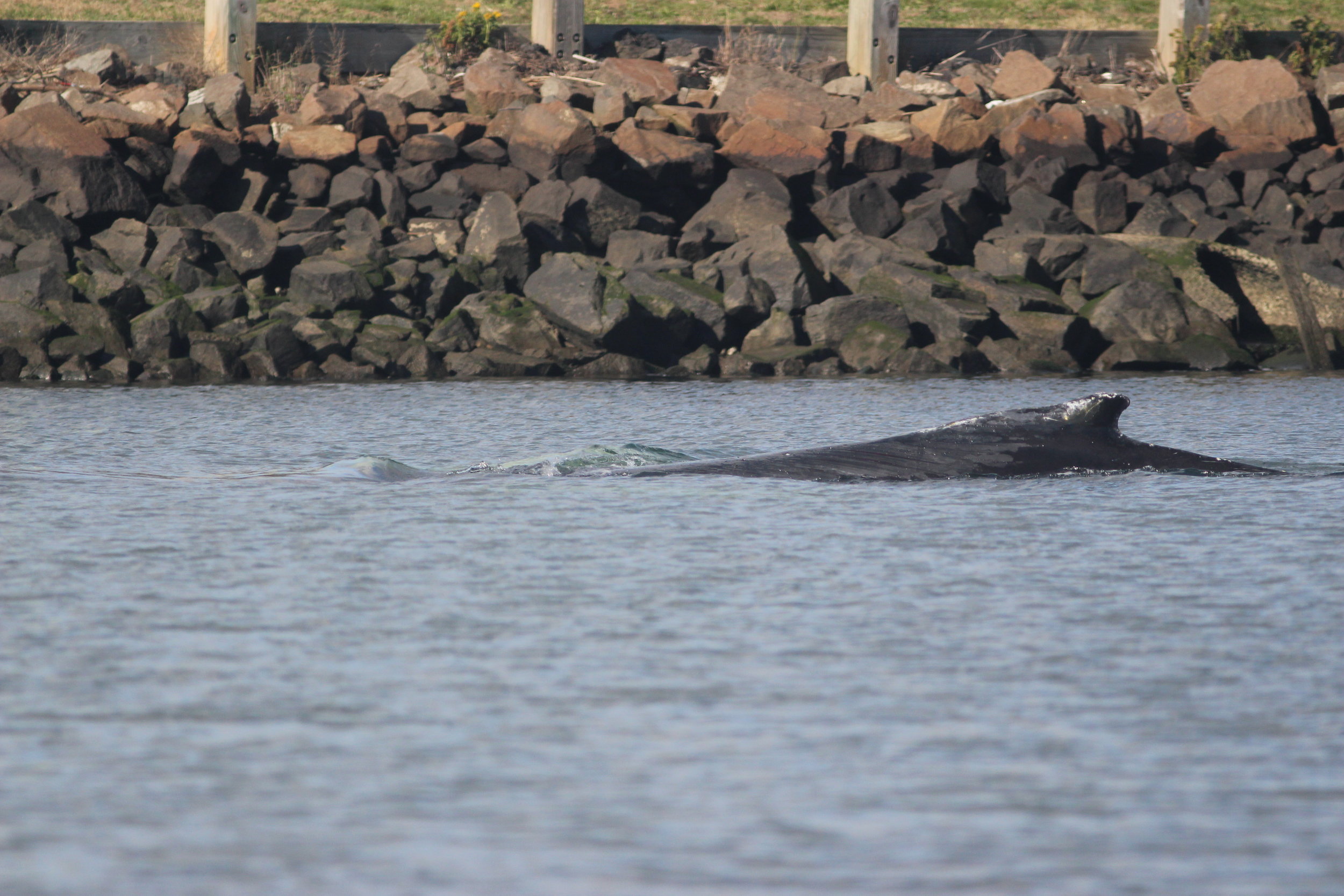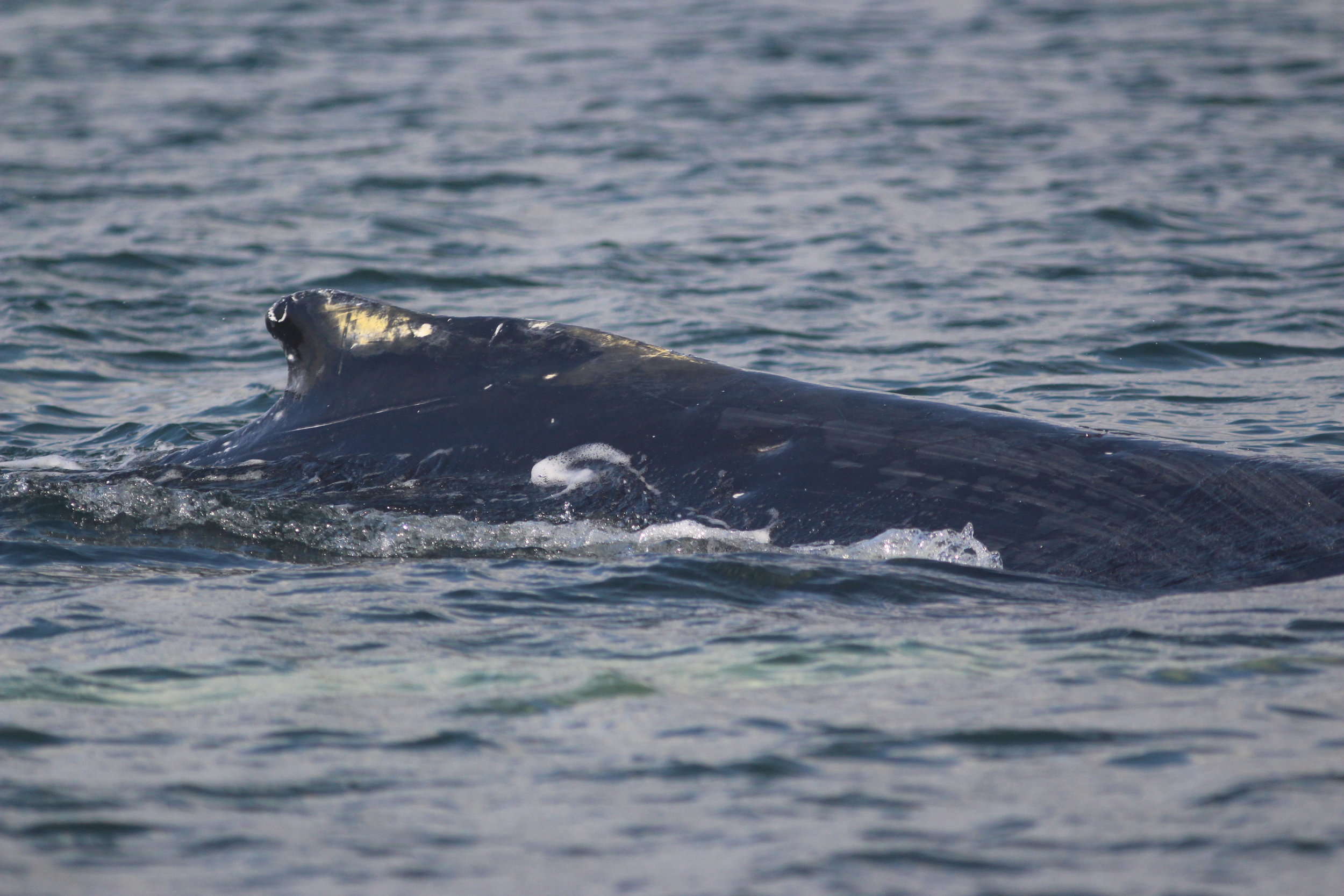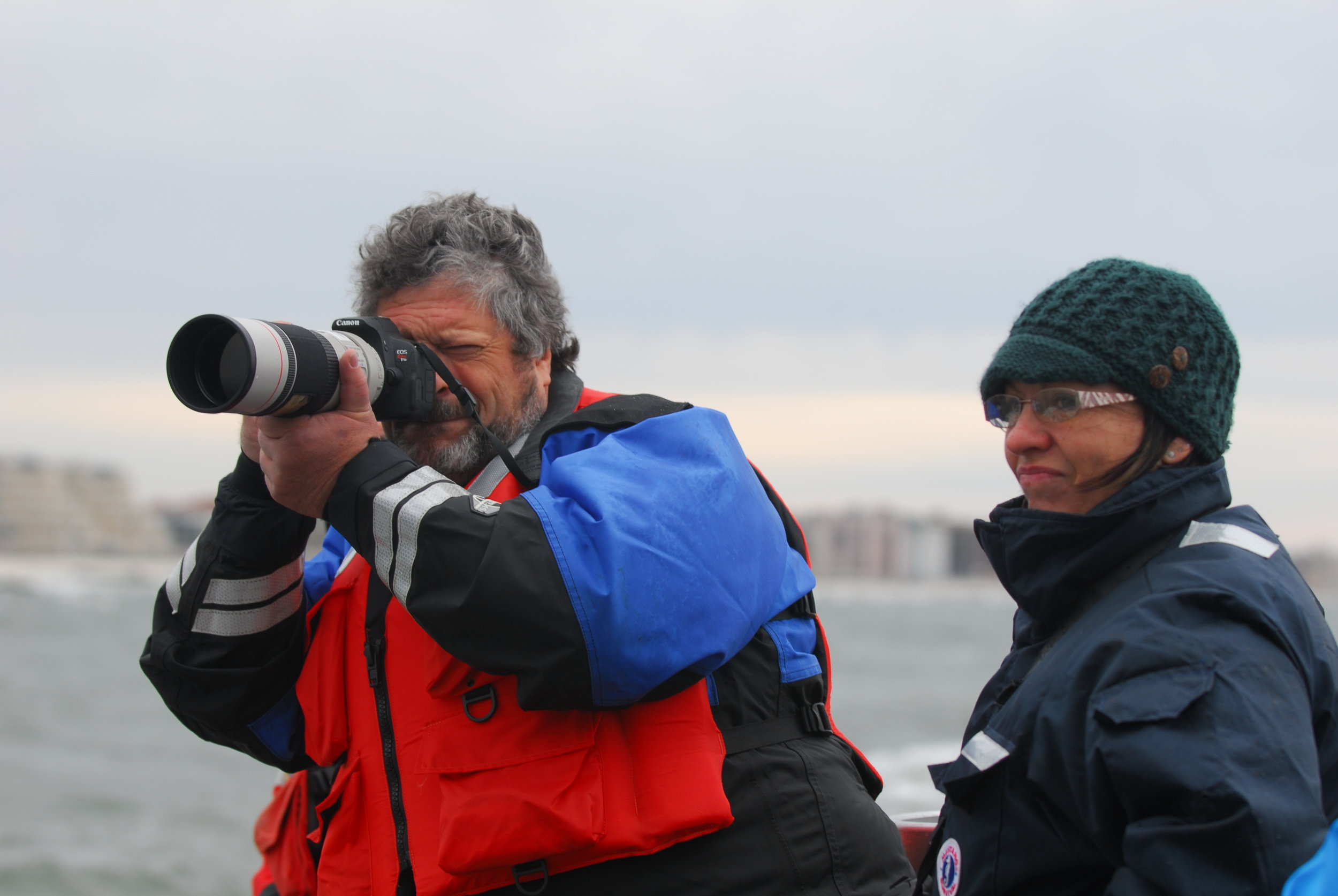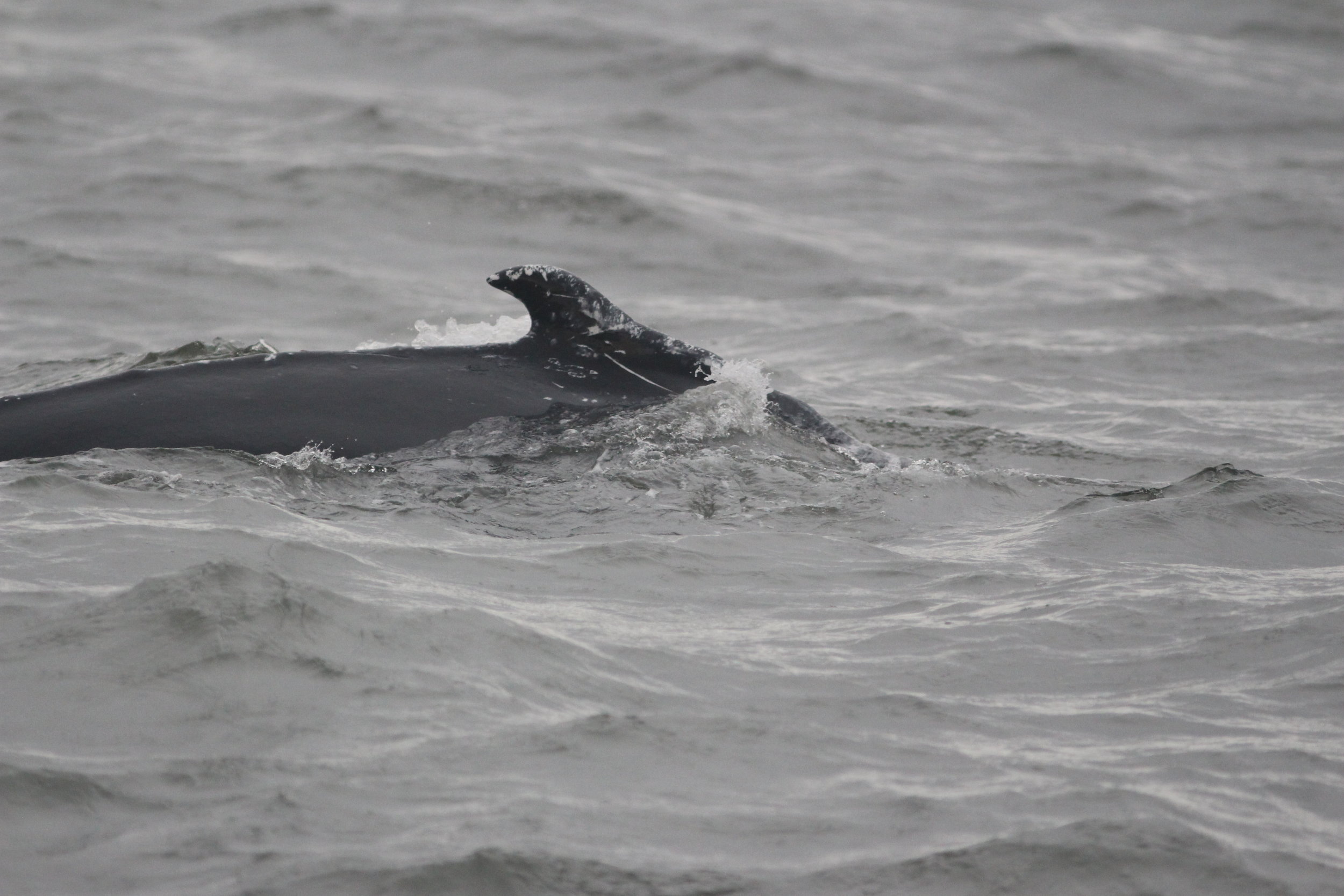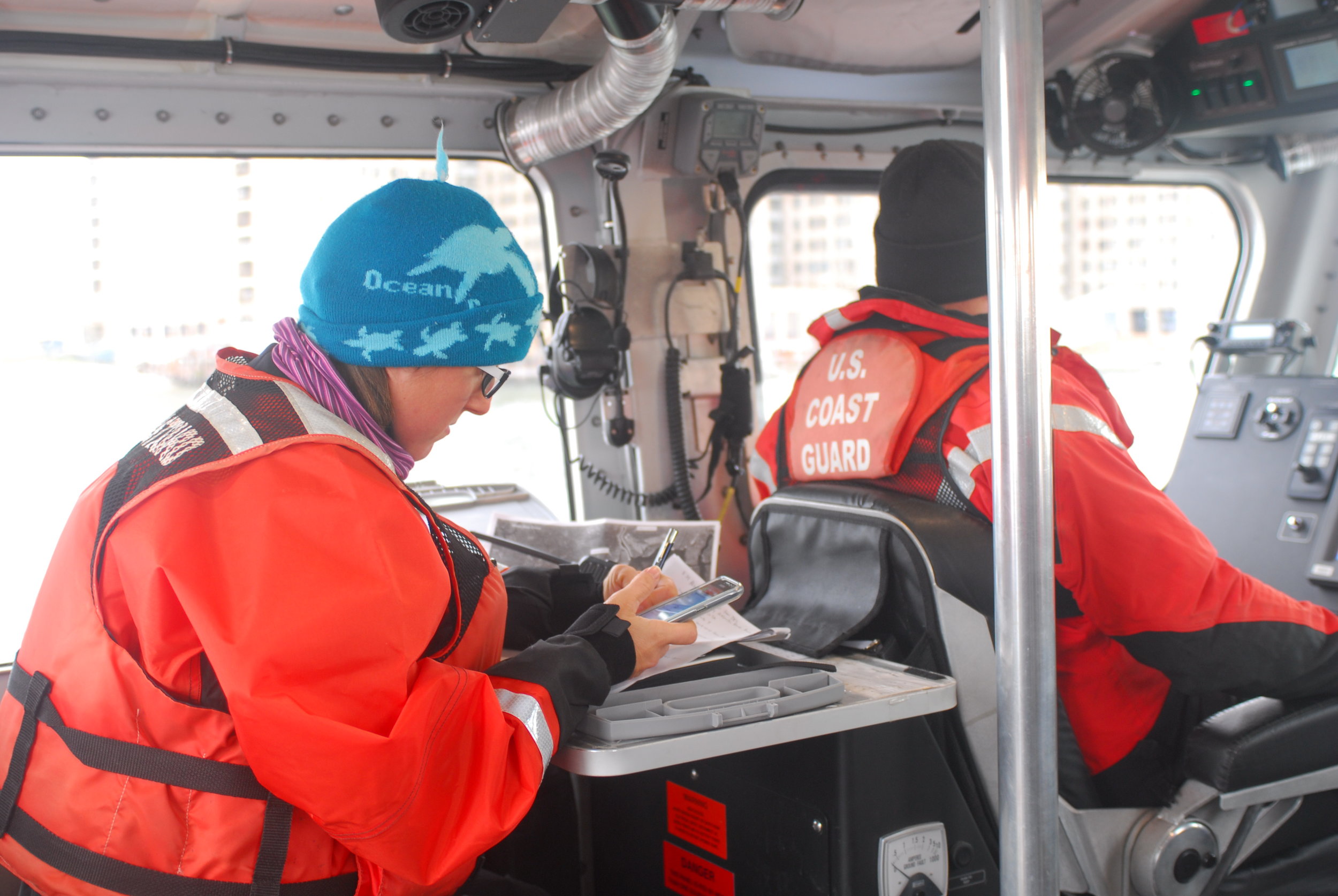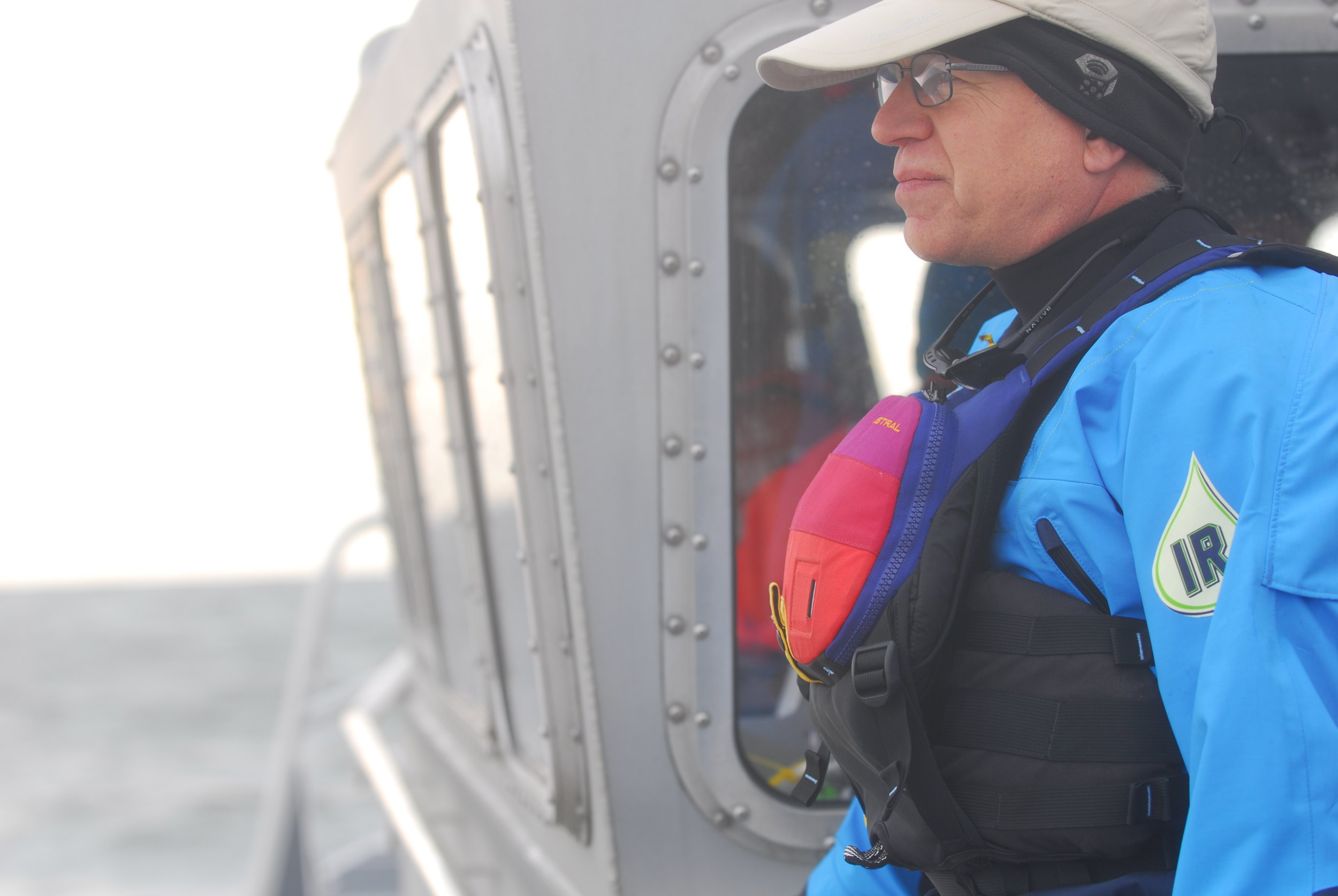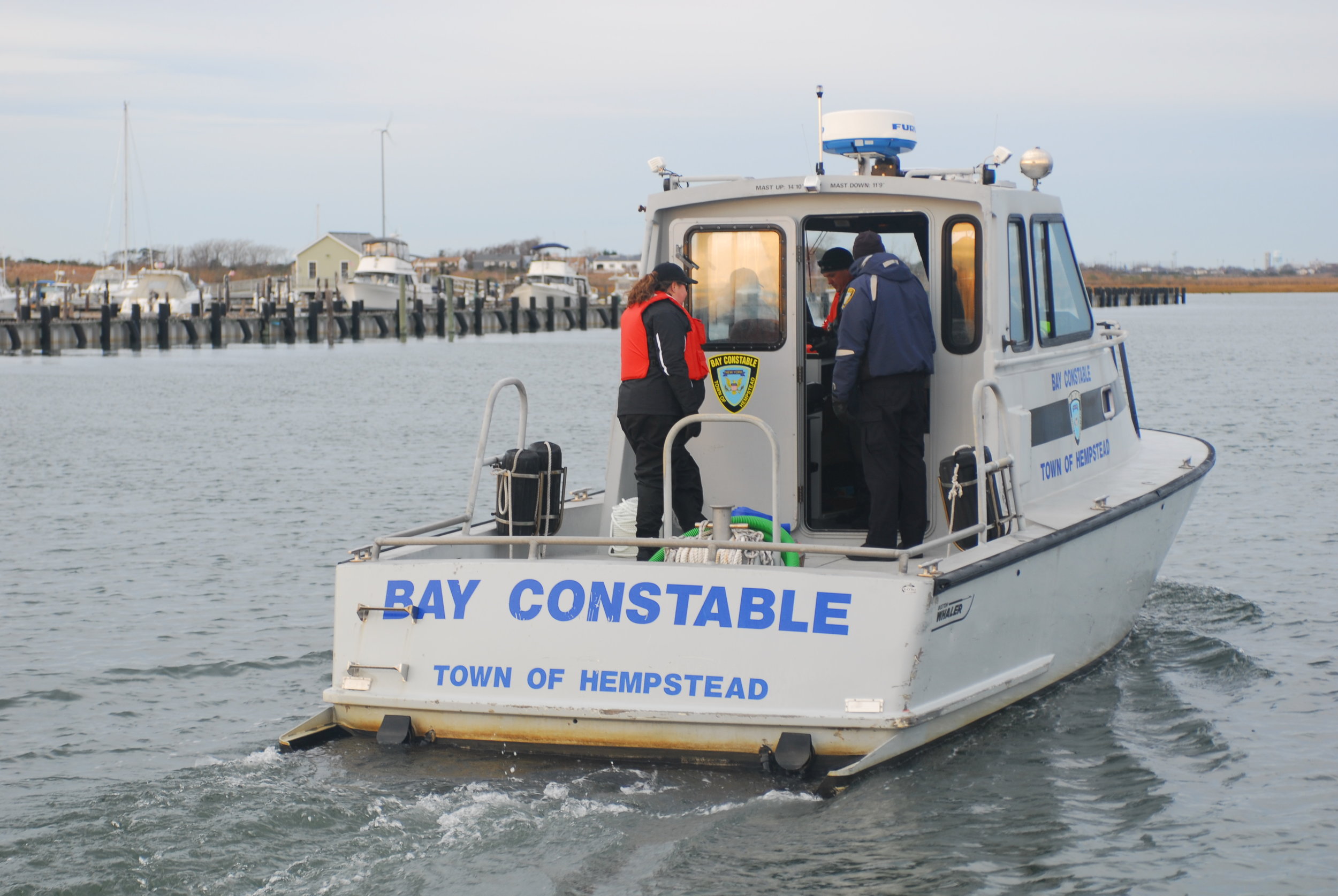AMCS Works with Stranding Network and Community to Return Reynolds Channel Whale Back to the Ocean
Last week, Atlantic Marine Conservation Society worked to monitor, assess, and develop a plan to help a humpback whale in Reynolds Channel return to the ocean. While herding efforts ultimately were not utilized as we believe the whale finally made its way out on its own, AMCS is still thankful for all of those that were involved. Here's the story...
The event began with a call from The Nature Conservancy on Friday, November 10. A member of their organization had seen a Facebook video that showed a humpback whale swimming in Reynolds Channel. Sightings since then had been sporadic, but AMCS kept it on their radar. After another few sightings the following week, AMCS joined the Town of Hempstead Bay Constables on the water to survey the area and assess the whale. The whale was around 30 feet in length, and appeared to be behaving normally, breathing well, and swimming freely. A warning was issued to mariners by the United States Coast Guard to let them know the whale was in the area, and to exercise caution. Over the next two days, a team with AMCS and other organizations continued to monitor the whale's behavior and survey the area.
Throughout monitoring efforts, the team also began to develop a plan for response should various outcomes occur. As the animal appeared to be healthy, a plan to begin herding was formulated. Though herding efforts have historically been unsuccessful for baleen whales, AMCS biologists explored and planned for this option since this whale was free swimming but seemed unwilling to travel under the easternmost bridge to the ocean.
On Friday, November 17, the team opted to do land-based surveys only. This was to ensure the safety of the team because of high winds that made it dangerous to go on the water, and also give the whale some space as well. It is important that animals like these do not become used to boats as it could alter their future behavior. Humpback whales are large, wild animals, and it is dangerous to get close to them. Interaction can cause stress and result in agitated behavior. As with all wildlife, it is best to limit interaction as much as possible, and allow animals the opportunity to return home on their own. This whale was likely in its teen years, and behaved as such, exploring an area it shouldn't be.
On Saturday, November 18, the team aimed to put a herding plan into action. The herding team was comprised of three authorized vessels: a US Coast Guard boat, a Bay Constable boat from Town of Hempstead, and a fire boat, to encourage the whale toward the closest outlet to the ocean. Biologists with AMCS, NOAA Fisheries officials, and veterinary support were staffing these vessels and leading the herding operations. Safety is of the utmost importance for both the teams on the water and the whale. The day's plan also included periodic breaks to limit stress to the whale. Members of the community were asked to limit time on the water, or if possible stay clear of the area, so the team of professional and experienced staff could work to get the whale back out to the ocean.
The day's operations included survey boats staffed with volunteer naturalists from local organizations that were tasked with monitoring the bays and canals that the whale had been observed swimming through in previous days. In order to minimize the interaction with the whale during herding operations, the NYS DEC Enforcement officers and Nassau Marine Patrol were on the water as the security team, and were tasked with notifying boaters in the vicinity of herding operations to alter their course or halt if the whale was proceeding in their direction. Survey teams positioned on land were also part of the plan, documenting the on water activities and searching for the whale. All divisions of the plan were integral to the success of the operation, and AMCS would not have been able to attempt to assist the whale back to sea without all the partners involved.
With all of this in mind, our team was cautious in these efforts to ensure safety. After extensively surveying the area this on Saturday, the team did not locate the whale. Because of this, we are optimistic it has returned to the ocean! Other whales had been observed in the surrounding areas, which is normal behavior. The team took photos document these whales, and also compare the photos taken of the whale in Reynolds Channel to see if it could be identified among this new group. Hundreds of photos were taken, and it may be some time before we can get a positive ID.
Atlantic Marine Conservation Society and NOAA Fisheries Service extend gratitude to collaborating partners during this effort: NYS Department of Environmental Conservation, Town of Hempstead Bay Constables, International Fund for Animal Welfare - IFAW, U.S. Coast Guard Jones Beach Station, Nassau County Marine Bureau, Nassau County Police Department, NC State University, Wildlife Conservation Society, Operation Splash, Gotham Whale, and The Nature Conservancy in New York.
We ask that the public please continue to be on the lookout, and please report sightings to sightings@amseas.org.
Help support the efforts of
Atlantic Marine Conservation Society
DONATE HERE
Read stories in the news by clicking the name of the publication below:
ABC
CBS
Long Island Herald
NBC
News 12
Newsday: here and here
New York Times
Washington Post
